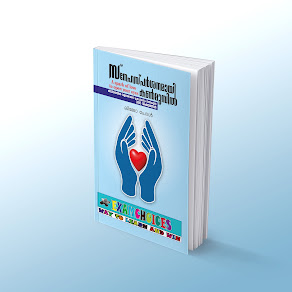HSA NATURAL SCIENCE SYLLABUS
PART B
Module-I ANIMAL DIVERSITY
1.Whittaker’s
five Kingdom Classification:
Kingdom
Protista-Salient features Parasitic Protozoans
e.g.Entamoeba histolytica,Morphology,Life
history,Pathogenicity Trypanosoma gambiense,Prophylactic measures Plasmodium
vivax
Kingdom
Animalia
Levels of organization-Cellular,Tissue,Organ,Coelom,Symmetry
Phylum
Non-Chordata:
Phylum
Coelenterata
General characters
Classes:(1)Hydrozoa e.g.Obelia
(2)Scyphozoa e.g.Aurelia
(3)Anthozoa e.g.Sea anemone
Polymorphism in Coelenterata
Phylum
Platyhelminthes:
General characters
Classes(1)Turbellaria e.g.Planaria
(2)Trematoda e.g.Fasciola
(3)Cestoda e.g.Taenia Solium
Phylum
Nematoda
General characters
e.g.Ascaris,Ancylostoma,Enterobius,Wuchereia
Phylum
Annelida
General characters
Classes(1)Polychaeta e.g.Arenicola
(2)Oligochaeta e.g.Nereis
(3)Hirudinea e.g.Hirudinaria
Vermiculture(brief account)
Phylum
Arthopoda
General characters
Classes(1)Crustacea e.g.Penaeus
(2)Insecta e.g.Honey bee
(3)Merostomata e.g.Limulus
(4)Myriapoda e.g.Centepede
Phylum
Onychophora
Peripatus.Affinities,Distribution Social organization:Honey
bee(mention caste system)
Economic importance:Sericulture
Phylum
Mollusca
General characters
Classes(1)Amphineura e.g.Chiton
(2)Bivalvia e.g.Perna
(3)Scaphopoda e.g.Dentalium
(4)Gastropoda e.g.Pila
(5)Cephalopoda e.g.Sepia
Economic importance:Pearl culture
Classes:(1)Asteroidea e.g.Asterias
(2)Ophiuroide e.g.Ophiothrix
(3)Echinoidea e.g.Echinus
(4)Holothuroidea e.g.Sea cucumber
(5)Crinoidea e.g.Sea lily(Antedon)
II.PHYLUM
CHORDATA
General characters
Sub phyla (1)Urochordata:e.g.Ascidia
(2)Cephalochordata e.g.Amphioxus
(3)Vertebrata.General characters
Divisions(1)Agnatha.General character
e.g.Petromyzon(2)Gnathostomata-General characters
Super class
(1)Pisces.General characters,Classification
Class(1)Chondrichthyes e.g.Scoliodon
Class(2)Osteichthyes e.g.Sardinella
(2)Tetrapoda Salient features/General characters
Classes(1)Amphibia:General characters
Orders(1)Urodela:e.g.Ambystoma
(2)Aneura:e.g.Hyla,Bufo
(3)Apoda:e.g.Ichthyophis
(2)Reptilia:General characters
Common examples:Calotes
Identification of venomous and non-venomous snakes
(3)Aves:General Characters
Common examples:Emu,Pavo Migration of Birds(4)
Mamalia:General characters Common examples:Rattus Dentition
Mammals
Module-II
I.PHYSIOLOGY,BIOCHEMISTRY
& DEVELOPMENTAL BIOLOGY
1.Physiology
-Nutrition:
Types,Balanced diet,Nutritional disorders.Vitamin deficiency
diseases,life style Diseases,role of fibres,nervous & neutronal control of
digestion
Circulation:Blood
and its composition,blood group,blood clotting mechanisms,anticoagulants,heart
beat,pacemaker and conducting system of heart,blood pressure,pulse,common
cardiovascular diseases.ECG,angiogram,angioplasty.
Respiration:Gas
exchange,respiratory pigments,Haemoglobin,Transport of respiratory gases.
Regulation of respiration-Respiratory
disturbances.Apnoea,dyspnoea,hypoxia,hyper and hypo capnia,asphyxia,CO
poisoning,asthma
Excretion:Nephron.Structure,Urine
formation,role of kidney in osmoregulation,composition of urine,abnormal
constituents of urine,renal disorders.nephritis,haematuria,renal
calculi,acidosis and alkalosis,Dialysis.
Muscle
Physiology:Types of muscles,Ultrastructure of striated muscle fibre,Muscle
proteins,Muscle twitch,All or none law,Rigor mortis,Physiological and
biochemical changes in muscle contraction
Nerve Physiology:Structure
of neuron,types;Synapse.types,nerve impulse propagation,Synaptic
transmission,Reflex action,Neurotransmitters,EEG.Nerve
disorders.epilepsy,Parkinson’s diseases,Alzheimer’s
Endocrinology:Endocrine
glands in man ,hormones and disorders,mechanism of hormonal activity
2.Biochemistry:Biomolecules.Carbohydrates,Proteins,lipids
and nucleic acids,structure and classification with examples.
Metabolism:Carbohydrate
glycogenesis,glycogenolysis,glycolysis,Kreb’s cycle Electron Transport Chain
-Lipid:Beta
Oxidation.Protein.deamination,transamination,Urea formation-Enzymes:Mechanism
of enzyme action,factors affecting enzyme action,Isoenzyme,Coenzyme,enzyme
inhibition and activation
3.Developmental
Biology
Theories:Preformation,Epigenesis,Recapitulation
and Germplasm-Spermatogenesis,Oogenesis,Typical egg and Sperm
Type of eggs.
Fertilization:Agglutination,Amphimixis,Physiological
and biochemical changes during and after
fertilization,Parthenogenesis,Artificial
Parthenogenesis,Arrhenotoky,Thelytoky,Obligatory and facultative;Significance
of fertilization and Partheogenesis.
Cleavage:Types,Morula,blastula(different
types),fate maps.Gastrula.Morphogenetic movements.concept of germ layers.
Cell
differentiation:Unipotency,Pleuri and totipotency,Gene action.Homeotic
genes,Hox genes
Development:Man.Implantation,Pregnancy,Placentation.Different
types function
Teratology:Definition,Causes
of infection,drug and chemicals,metabolic imbalance,ionizing
radiation,malnutrition,auto immunization
Experimental
Embryology:
Spemann’s construction experiment,Organizer and embryonic
Induction,IVF and embryo transfer in man,cloning experiment in animals,Prenatal
diagnosis.Amniocentesis,Chorionic villus sampling,ultrasound scanning,stem
cells.embryonic and adult.Stem cell therapy.
MODULE-III
CELL AND
MOLECULAR BIOLOGY,GENETICS,BIOTECHNOLOGY AND BIOINFORMATICS
CELL BIOLOGY
Development and Scope,Cell theory and its Modern version.
Types of Cells:Prokaryotic and Eukaryotic Ultra structure
and functions of Plasma
Membrane,Plasma membrane model.Fluid
mosaic,Functions,Membrane transport,Cell communication—Modifications of Plasma membrane.
Cell
organelles:
Nucleus-Structure,interphase,nuclear envelope.functions.
Nucleolus-Structure,nucleolar organizer and functions.
Mitochondria-Structure and function,Oxidative
phosphorylation
Endoplasmic reticulum-Structure and function,types.
Lysosomes-Morphology,Polymorphism and functions
Ribosomes-Different types.sub units,functions.
Centrioles and basal bodies.Structure and
function.Microbodies.Peroxisomes,glyoxisomes,glyoxisomes,functions.Cell
division.
MOLECULAR
BIOLOGY
Gene expression:Central dogma in Molecular Biology ,One
gene,One enzyme,one gene.one polypeptide hypotheses.
Genetic code-Wobble hypothesis
Contributions of Khorana,Nirenberg and associates,RNA
polymerase,chaperones,protein synthesis.
Gene regulation:Operon concept.Lac and Trp operon.
Bacterial Recombination:Transformation,Conjugation and
Transduction.
GENETICS AND
BIOTECHNOLOGY
Human Genetics:Karyotyping,pedigree analysis,chromosomal
anomalies in man.
A.Autosomal e.g.Down Syndrome,Edwards Syndrome)
B.Allosomal(e.g.Turners and Klinefelters syndrome)
Biochemical genetics:
Disorders Phenylketonuria,alkaptonuria,albinism,tyrosinosis
BIOTECHNOLOGY
Scope of Biotechnology,Recombinant DNA Technology,Techniques
in gene cloning,restriction endonucleases,ligases,major steps in cutting and
joining of DNA,Probes,linkers.
Blotting
Techniques
Southern,Northern and Western,DNA finger printing
Genomic
library
cDNA library,PCR,DNA sequencing
Human Genome
Project
Hybridoma and monoclonal antibodies,transgenic organisms.
Practical
applications
Medicine,agriculture,industry,pollution control,forensic
& judiciary.
Potential hazards of Biotechnology
IMMUNOLOGY
AND MICROBIOLOGY
IMMUNOLOGY:
Immunity:Definition,Types
Immune
System:
Primary and Secondary
Immunogens:
Antigens-Definition,types
Antigen-antibody reactions
Immune
responses:
Allergy-Classification
AIDS,Autoimmunity,Vaccines
MICROBILOGY:Survey of
microbes-Viruses-Prions,Viroids,Bacteria,Protozoa.
Applied microbiology in various fields
Microbial diseases in man.
Module IV-ECOLOGY,ETHOLOGY,EVOLUTION
AND ZOOGEOGRAPHY ECOLOGY
Population ecology:Properties of
Population,emigration,immigration and migration,population fluctuation.
Community ecology:Definition,Species diversity.
Wildlife
conservation and Management
Threatened Species Red data book,IUCN,WWF,CITES,Green
Peace,Biosphere reserve,National Park,Sanctuaries,forests in India,Importance
of mangroves,hotspots.
Ecosystem-Conservation and management.
ETHOLOGY
Motivation,Learning-types,socio biology,pheromones,human
pheromone.
EVOLUTION
Geological time scale,fossils,fossil dating and significance
of fossils
Genetic drift,genetic equilibrium,Hardy-Weinberg
law,punctuated equilibrium.
Speciation-Sympatric and allopatric,adaptive radiation
Zoogeography
Animal distribution-Different types,factors affecting
distribution.
Zoogeographical realms-Brief account of each realm
Biogeographical classification of India-Eastern and Western Ghats.
Module
V-MICROBIOLOGY
Bacteria:UItra structure,reproduction,genetic
recombination,economic importances(Industrial uses,food preservation and
spoilage,biopesticides,biofertilizers,sewage treatment,nitrogen fixation and
symbiosis),staining techniques
Viruses:Structure and reproduction-RNA and DNA
viruses,bacteriophages,TMV and HIV
MYCOLOGY AND
LICHENOLOGY
Fungi:General characteristics,reproduction and life
cycle,heterothallism and parasexuality
Distinguishing characters of different classes of fungi
representing the following genera:
Mastigomycotina(Pythium),Zygomycotina(Rhizopus),Ascomycotina(yeast),Basidiomycotina(Agaricus)and
Deuteromycotina(Cercospora)
Economic importances of fungi:industrial,medicinal,food and
agriculture(Biofertilizers and Biocontrols)
Lichens:Economic and ecological importances,habit of
crustose,foliose and fruticose lichens-homomerous and heteromerous
General account and economic
importance,structure,reproduction and lifecycle of Usnea
PLANT
PATHOLOGY
Principles of plant pathology-biotic and abiotic causes of
plant diseases
Classification of plant diseases on the basis of causative
organisms and symptoms:
Transmission and spread of diseases-quarantine
regulations-disease control measures
Study of the following diseases-causal
agent,symptoms,etiology and control measures:Tapioca mosaic disease,Citrus
canker,Blast of paddy
BRYOLOGY
Structure,reproduction and life cycle of the following
types:Hepaticopsida(Riccia),Anthoceratopsida(Anthoceros),Bryopsida(Fuaria)
Economical importances of bryophytes
PTERIDOLOGY
Structure,reproduction,life cycle and affinities of
following types:Psilotum(Psilopsida),Selaginella(Lycopsida),Equisetum(Sphenopsida)and
Marsilea(Pteropsida)Heterospory and seed habit Affinities of pteridophytes with
bryophytes and gymnosperms Economic importances of pteridophytes-Biofertilizer
GYMNOSPERMS
General characters,structure(external and
internal),reproduction and life cycle of following
gymnosperms-Cycas,Pinus,Gnetum Origin and evolution of gymnosperms and their
affinities with pteridophytes and angiosperms Economic importances of
gymnosperms.
PALAEOBOTANY
Objectives of palaeobotany,geological time scale,methods of
fossilization,fossil pteridophyte(Rhynia)
MODULE
VI-MORPHOLOGY
Description of various types of
leaves,stem,inflorescence(racemose,cymose and mixed type),fruit
(simple,multiple and aggregate)placentations(axile,marginal,free-central)Seeds
and seed dispersal
SYSTEMATICS
Objectives and importances of systematic Systems of
classification:Artificial(Linnaeus),Natural(Benthem and Hooker),and
Phylogenetic(Engler and Pranti)
Detailed study of Benthem and Hooker Classification
Principles and rules of plant nomenclature,ICBN Taxonomic structure-hierarchial
concept,(Type,species,genus,family)
Recent trends in
taxonomy-cytotaxonomy,chemotaxonomy,numerical taxonomy,molecular taxonomy
Taxonomic information resources:herbaria,botanical
gardens,BSI,taxonomic literature:floras,manuals and monographs Study the
following families:Annonaceae,Malvaceae,Rutaceae,Leguminosae,Cucurbitaceae.
Rubiaceae,Asteraceae,Apocynaceae,Solanaceae,Acanthaceae,Lamiaceae,Euphorbiaceae,Liliaceae,Orchidaceae,Poaceae
ECONOMIC
BOTANY
Botanical name,family,morphology of useful part of the
following:
Cereals:Wheat,ragi
Pulses:Black gram,Bengal gram
Sugar:Sugar cane
Spices:Cardamom,black pepper,nutmeg
Tubers:Tapioca
Fibre:Coir,cotton,jute
Latex:Rubber
Beverages:Coffee
Medicinal :Adhatoda,Catheranthus,Rauvolfia,Phyllanthus,Neem
ANATOMY
Typical structure of a plant cell
Non-living inclusions of plant
cells.Cystolith,raphides,aleuron grains,starch grains
Tissues:Meristematic,permanent and complex tissues
Roots and shoot apex organization
Primary and secondary structure of root,stem(Monocot and
dicot)
Anatomy of monocot and dicot leaf
Stomata-structure-dicot and monocot
Nodal anatomy
Structure of secondary wood-phellem,phellogen and
phelloderm,lenticels and annual rings
Anomalous secondary growth-Boerhaavia,Bignonia and Dracaena
EMBRYOLOGY
Microsporogenesis:Development of microsporangia,and male
gametophyte
Megasporogenesis:Development of megasporangia and female
gametophyte
Types of ovules:orthotropous,anatropous,campilotropous
Fertilization and endosperm formation
Endosperm formation:nuclear,cellular and helobial
Embryo-dicot and monocot
embryo,polyembryony,apomixes,apospory and parthenocarpy
CROP
IMPROVEMENT
Objectives of plant breeding
Breeding techniques and achievements
Introduction and acclimatization
Selection-pure line selection,mass selection and clonal
selection
Hybridization
Heterosis and inbreeding depression
Polyploidy breeding
Mutation breeding
Plant Propagation methods:Cutting,Budding,Grafting and
Layering
MODULE
VII-PLANT PHYSIOLOGY
Water in relation to plants:Water
potential,diffusion,osmosis,DPD,turgor pressure,osmotic
pressure,exomosis,endomosis,plasmolysis
Transpiration:Mechanism of guard cell movement, role of K
ions,anti-transpirants
Mechanisms of water absorption,passive and active
Translocation of water:transpiration pull
Water stress and physiological consequences
Mineral nutrition-essential and non-essential elements and
their role in growth and development Mechanism of mineral
absorption-active,passive and fecilitated
Photosynthesis:Chloroplast as photosynthetic apparatus,light
phase,cyclic and non-cyclic
Photphosphorylation,dark reaction,C3,C4 and CAM path
ways,photorespiration.
Translocation of photosynthates:Pholem transport,phloem
loading and un-loading
Growth and Development:Concept of hormone and growth
regulators on plant,hormones and their
action:auxins,GA,cytokinines,ABA,ethylene Photoperiodism,and vernalization
Photomorphogenesis,phototropism,gavitropism,Nyctinastic,Seismonastic
movement
METABOLISM
AND BIOCHEMISTRY
Biological nitrogen fixation,symbiotic nitrogen
fixation,biochemistry of nitrogen fixation and genetics of nitrogen fixation
Biosynthesis of amino acids,reductive amination and transammination.GS/GOGAT
pathways
Oxidation of fatty acids,alpha and beta oxidation of fatty
acids,cellular respiration of proteins.
CELL BIOLOGY
Chromosomes,morphology,telomere,satellite,primary and
secondary constrictions,nuclear organizer,chromosome banding,heterochromatic
and euchromatic,nucleosomes,polytene and lampbrush chromosomes,chromosomal
aberrations-deletions,duplication,inversion and translocation Numerical
aberrations:anueploidy and euploidy Cell cycle:mitosis and
meiosis,significances of meiosis
GENETICS AND
MOLECULAR BIOLOGY
Mendel’s experiments,symbols,terminology,Mendalian
laws,Monohybrid cross,Dihybrid cross,backcross,Test cross,Modified Mendelain
ratios inter actions of genes,epistasis,Complementary genes,Inhibitary
genes,quantitative inheritance
Mulitiple alleles-Self sterility in nicotiana
Linkage and crossing over-2 point and 3 point
crosses,Linkage maps,interference and coincidence
Sex determination and Sex linked inheritance
XX-XY type XX-XD type,Sex determination plants,criss cross
inheritance,Sex limited and sex influenced traits
Extra nuclear inheritance plastid inheritance in
mirabilis,coiling of shells in snails
Mutation-Types Mutagens,Physical and Chemical,Molecular
basis of Mutations,transitions,
Transversion,frameshift
Nucleic acids-DNA,RNA-Evidence of DNA as genetic material
DNA structure Watson and Cricks model,types of DNA,A,B,Z,RNA structure
types(mRNA,tRNA,rRNA)
DNA replication,enzymology of DNA replication,semi
conservative mode,Meselon and Stahis experiments,molecular mechanism of
replication in Prokaryote and Eykaryote
Post transcriptional modifications,translation,teminism
EVOLUTION
Molecules and origin of lives ,evolution of Prokaryotic and
Eukaryotic cells,Mitochondrial and endosymbiotic theory,Chloroplast and endosymbiotic
theory.Theories on origin and evolution of
species,Lamarkism,Darwinism,Weismann,Devries,Neo Darwinism
MODULE
VIII:ENVIRONMENTAL BIOLOGY
ECOSYSTEM
Introduction-Basic principles and concepts of ecology and
environment.Interdisciplinary approach.Scope and relevance to society and human
environment.Need for public awareness-Ecosystem-Definition,ecosystems-concept
of an ecosystem.Structure and function of an ecosystem.A)Abiotic
factors:Climate shapes the character of ecosystem-Edaphic factors-B)Biotic
factors-food chain Food web and ecological pyramids.Biogeochemical
cycle:Gaseous-Carbon,Oxygen & Nitrogen.
Hydrological-Water-Ecological
succession-definition,types,causes of succession,process of
succession.Hydrosere and Lithosere.Ecological groups of plants:Hydrophytes,Xerophytes.Halophytes,Epiphytes
and Parasites(brief account only)
Natural
resources
Renewable and non-renewable resources.Natural resources and
associated problem.Forest
resources-deforestation,aforestation,conservation-protection forestry-chipko movement-production-commercial
forestry-social forestry,Agroforestry-timber extraction,mining,dams and their
effects on forest,and tribal people-mineral resources-Environmental effects of
extracting and using mineral resources-Water resources-use and overuse of
surface water and ground water floods,droughts-Food resources.World food
problems-Energy resources.
Social
issues and the environment
Environmental pollution a)Definition,causes effects and
control measures.Types of pollution Soil,Air,Water,Solid wastes-management-radioactive,noise
& thermal pollution.Role of an individual in prevention of
pollution.Pollution case studies.Role of pollution control board-Urban problems
related to energy.Water conservation-Rain water harvesting and water shed
management.Resettlement and rehabilitation of people-its problems and
concerns.Environmental ethics:issues and possible solutions-Climate change and
Global warming,acid rain,ozone layer depletion,nuclear accidents-Wasteland
reclamation,Issues involved in enforcement of environmental legislation-Public
awareness-Human population and environment-Population growth,variation among
nations.Population explosion-Family welfare program.Environment and human
health:Human rights-The Ecological crisis-industrialization-the human transformation
of the earth-human activity is placing
the biosphere under increased increasing stress growth of the world
economy-urbanization-the vulnerable planet.World Earth summits and
protocols-Rio,Kyoto.Johannesberg.The failure of ecological reforms.
Biodiversity
and Conservation
Biodiversity-Concepts of biodiversity-Types of
bio-diversity-biodiversity in India.India as mega diversity nation-hotsposts of
biodiversity,threats to biodiversity-Conservation of biodiversity-The
conservation strategies are multidimensional-National parks,wildlife
sanctuaries.
TISSUE
CULTURE AND BIOTECHNOLOGY
Plant Tissue
culture
Plant Tissue Culture-History,Principle
Totiotency,differentiation,dedifferentiation,redifferentiation.Tissue culture
laboratory,Media-MS medium composition,Preparation,Sterilization
techniques,Ex-plant selection,sterilization and Inoculation.Types of
culture-Meristem culture,Organ culture;Sterilization and inoculation
Recombinant
DNA and Molecular cloning
Cloning vectors .Plasmids-Bacteriophages PBR322,PUC,phage.Artificial
chromosome vectors-BAC,YAC,Shuttle vectors.Consruction of recombinant DNA
methods.Gene transfer technique-Vector method.Agrobacterium mediated gene
transfer-Ti and Ri Plasmids;Direct DNA uptake-Electroporation-shot gun
method-microinjection,lipofection.Herbicide Resistance-drought
resistance-enrichment of storage protein,improvement of the nutritional
quality of seeds.Biotechnology and Bio
ethics-Gene therapy GMOs food safety,environmental and Biosafety
issues,Concerns,Role of multi national companies in
biotechnology-Agribusiness-Golden Rice,Terminator Genes.Economical and Legal
issue.BioEthics-Patenting
BIOINFORMATICS
Bioinformatics-Introduction,scope and fields of
application,Major databases in Bioinformatics:Nucleotide sequence databases-EMBL,DDBJ,GenBank;Protein
sequence databases swiss Prot,PIR,Database Search Engines-Entrez at NCBI of
USA,SRS at EBI of England.Sequence Similarity Search:Pair wise sequence
alignment-BLAST,FASTA;Multiple sequence alignment-CLUSTALW,CLUSTAL X
Homology modeling of protein,structure prediction-Protein
Data Bank.Similarity search.
Microarrays,Proteomics,Genomics and Application of
bioinformatics.
Microtechnique-Principles of Microscopy,micrometry,Killing
and fixing,Dehydration,Embedding,Staining,Clearing,Mounting
media,wholemount,maceration.
Biostatistics-Measures
of Central tendency-Arithmetic Mean,Median,Mode;Measures of
Dispersion-Range,Standard Deviation,Standard Error,Correlation and
Regression,Analysis of variance ANOVA;Application of Biostatistics.Design of
Experiment-Data collection,representation and interpretation,observation direct
and indirect observations,controlled and uncontrolled observations,Human and
machine observations.










The worst days of those who enjoy what they do,are better than the best days of those who don't.-Jim Rohn.
ReplyDeleteKERALA PSC ,UPSC Civil service online practices available .Don’t forget our Youtube Channel Subscribe.